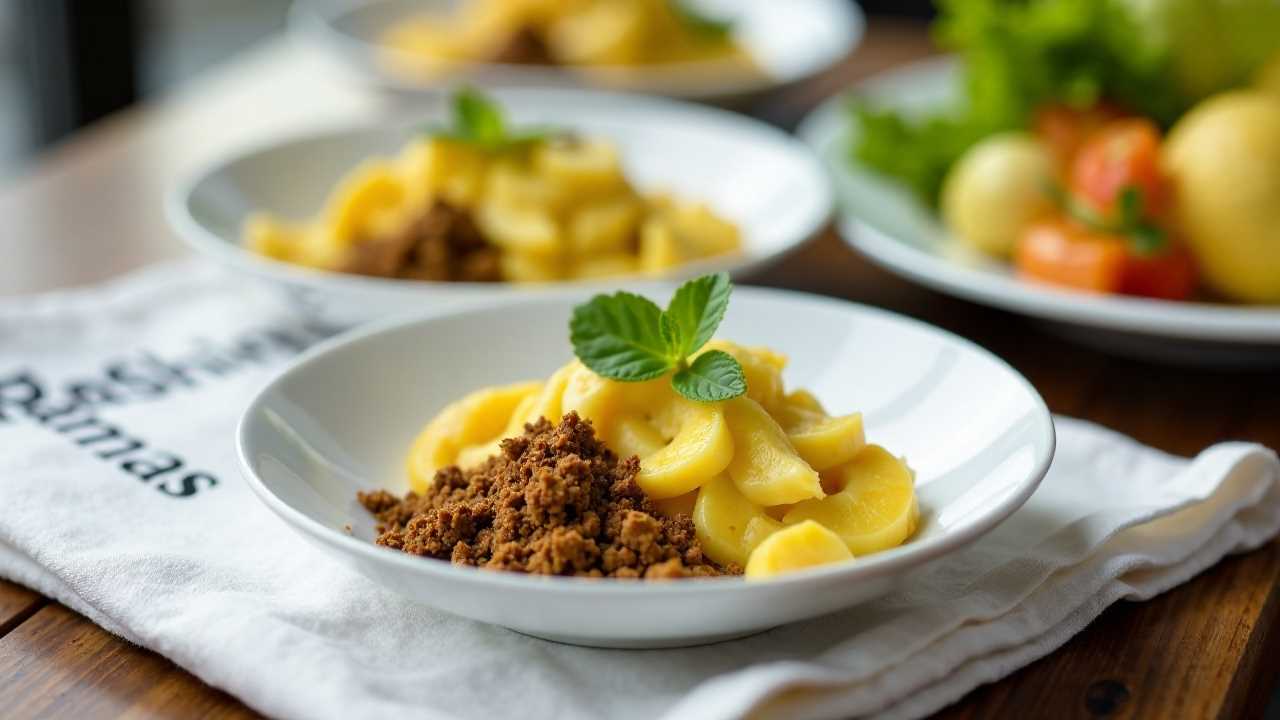
In the culinary world, we often find ourselves in situations where we need to substitute ingredients in our recipes. Whether it's due to dietary restrictions, allergies, or simply running out of a particular item, knowing how to swap ingredients can be a lifesaver in the kitchen. We'll explore some of the most common ingredient substitutions that can help you create delicious meals even when you're missing a key component.
Baking Essentials: Flour and Eggs
When it comes to baking, flour and eggs are two of the most crucial ingredients. However, there are times when we might need to find alternatives. For flour, we can use almond flour or coconut flour as gluten-free options. These alternatives work well in many recipes, but keep in mind that they may alter the texture slightly. If you're out of eggs, you can use mashed bananas, applesauce, or even a mixture of ground flaxseed and water as binding agents in your baked goods.
Dairy Substitutions
For those who are lactose intolerant or following a vegan diet, dairy substitutions are essential. We can replace milk with almond milk, soy milk, or oat milk in most recipes. When it comes to butter, coconut oil or vegetable oil can often be used as a substitute. For yogurt, try using coconut yogurt or soy yogurt. These alternatives not only cater to dietary needs but can also add unique flavors to your dishes.
Sweeteners and Sugar Alternatives
Sugar is a common ingredient in many recipes, but there are several alternatives available for those looking to reduce their sugar intake. We can use honey, maple syrup, or agave nectar as natural sweeteners. For baking, applesauce can be a great substitute for sugar, providing moisture and sweetness without the added calories. Stevia, a natural zero-calorie sweetener, is another option for those watching their sugar consumption.
Herbs and Spices
Herbs and spices play a crucial role in adding flavor to our dishes. If you find yourself without a specific herb or spice, there are often suitable alternatives. For example, if a recipe calls for fresh herbs and you only have dried ones, remember that dried herbs are more potent, so use about one-third of the amount called for in the recipe. Thyme can be substituted with oregano, basil with oregano or cilantro, and cumin with coriander.
Meat and Protein Substitutes
For vegetarians or those looking to reduce their meat consumption, there are numerous protein alternatives available. We can use tofu, tempeh, or seitan as meat substitutes in many dishes. Lentils and beans are excellent sources of protein and can be used in place of ground meat in recipes like tacos or spaghetti sauce. Mushrooms, particularly portobello mushrooms, can provide a meaty texture and umami flavor in vegetarian dishes.
Oil and Fat Alternatives
While oils and fats are important for flavor and texture in cooking, there are times when we might want to reduce our fat intake. Applesauce or mashed bananas can be used in place of oil in many baked goods. For sautéing, we can use vegetable broth or water instead of oil. Greek yogurt can be a great substitute for mayonnaise or sour cream in dips and dressings.
Gluten-Free Alternatives
For those with gluten sensitivities or celiac disease, finding gluten-free alternatives is crucial. We can use rice flour, almond flour, or coconut flour in place of wheat flour. Quinoa or rice can be substituted for pasta in many dishes. For binding in recipes, xanthan gum or guar gum can be used in place of gluten.
Nut Substitutions
Nut allergies are common, but that doesn't mean you have to miss out on recipes that call for nuts. We can use seeds like sunflower seeds or pumpkin seeds in place of nuts in many recipes. For peanut butter, sunflower seed butter or soy nut butter can be excellent alternatives.
Alcohol Substitutes in Cooking
Many recipes call for wine or other alcoholic beverages for flavor. If you prefer not to use alcohol, there are several alternatives. For red wine, we can use beef or vegetable broth with a splash of red wine vinegar. For white wine, chicken broth or white grape juice can be used. Apple cider vinegar can often be substituted for various types of alcohol in recipes.
Pantry Staples: Making Do with What You Have
Sometimes, we find ourselves without a key pantry staple. In these cases, creativity is key. If you're out of breadcrumbs, crushed crackers or rolled oats can work as a substitute. No baking powder? You can make your own by mixing cream of tartar with baking soda. Vinegar can often be substituted with lemon juice in recipes.
By understanding these common ingredient substitutions, we can become more flexible and creative in the kitchen. Whether we're dealing with dietary restrictions, allergies, or simply running low on certain ingredients, these swaps can help us continue cooking delicious meals. Remember, cooking is an art, and part of that art is learning to adapt and improvise. With these substitutions in your culinary arsenal, you'll be well-equipped to handle any kitchen challenge that comes your way.
 Family Craft ProjectsHome ImprovementCooking and BakingReuse and RecycleDIY GiftsEco-Friendly ProjectsDIY Home SolutionsSeasonal ActivitiesFun and GamesLearn TogetherPrivacy PolicyTerms And Conditions
Family Craft ProjectsHome ImprovementCooking and BakingReuse and RecycleDIY GiftsEco-Friendly ProjectsDIY Home SolutionsSeasonal ActivitiesFun and GamesLearn TogetherPrivacy PolicyTerms And Conditions
